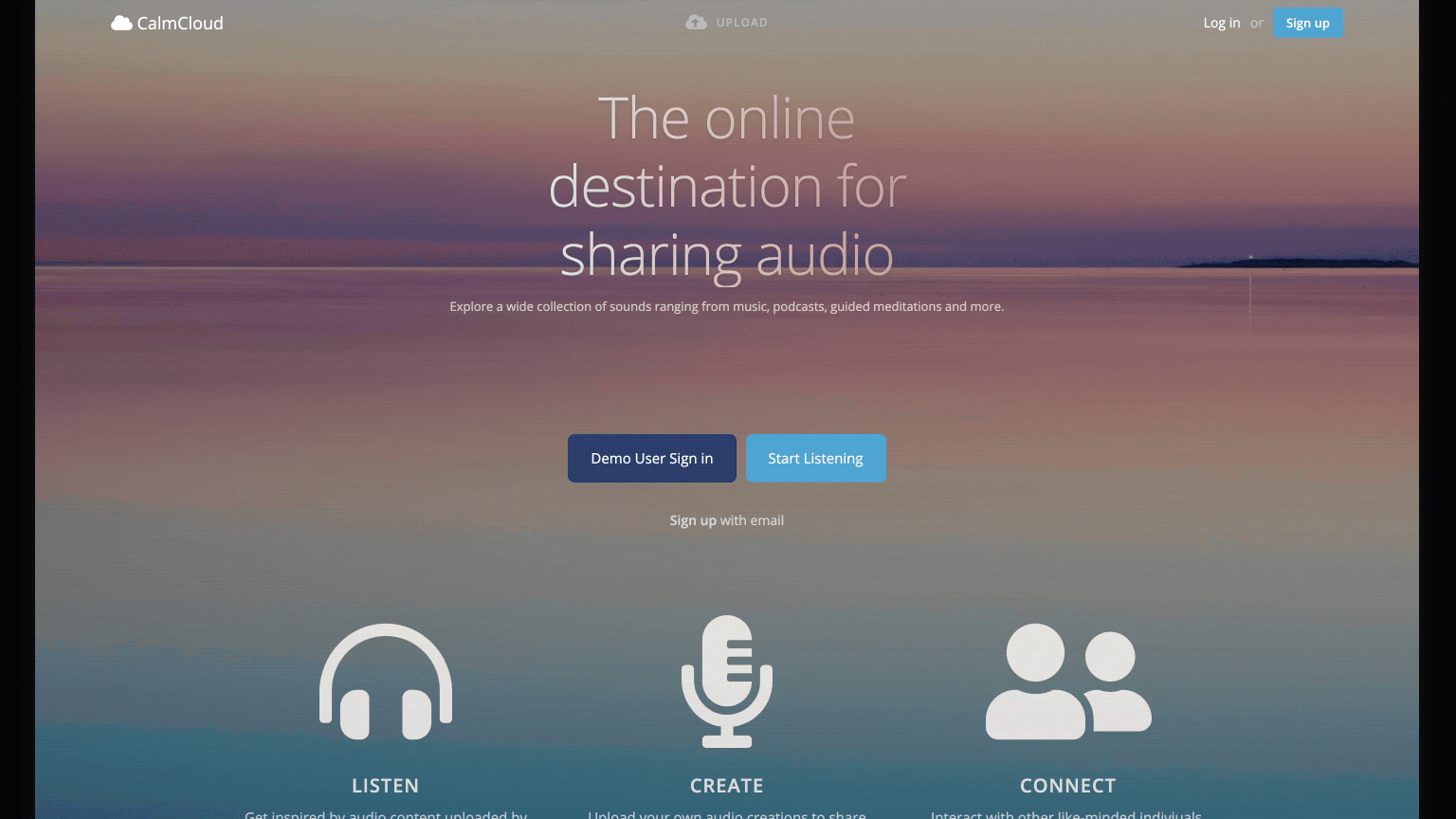
CalmCloud is an online music streaming service (inspired by Mixcloud.com) for music lovers - a platform where users can upload, share and interact with audio content provided by the website's wider community. Built with React, Redux, JavaScript, and Ruby on Rails, supported by a PostgreSQL database and ASW S3 storage.
This project is currently hosted at CalmCloud.app - CLICK HERE to visit the live version of this project
React, a JavaScript library used to assist with efficient management of rapidly changing data and maintaining a single-page web application structureRedux, a JavaScript library used in coordination withReactto create a centralized store for organizing and accessing dataJavaScript, the project's frontend programing languageRuby on Rails, a web application framework used to provide server-side structure for querying and retrieval of data from databaseRuby, the project's backend programing languagePostgreSQL, a database system used for storage and management of informationWebpack, a JavaScript bundler to assist with development and production buildsCSS3andHTML5, used to manage the presentation and styling of the project
- Comprehensive CRUD (create, read, update, delete) behavior for account creation, session management, audio content distribution, text comments, content favoriting and user subscriptions
- Integration with AWS S3 for efficient storage and retrieval of user uploaded audio and image files
- Error handling for character count warnings, restrictions on forbidden usernames/track titles and qualifications for valid password/email inputs
- Continuous audio playback across multiple routes, and interaction with audio playback throughout multiple components
- Customized presentation depending on whether or not a user is logged-in, and what content that user has interacted with (e.g. user profile and audio track pages appear slightly different if the current logged-in user is the owner of the content on the page)
- A polished and intuitive user interface/experience including progress bars, user/track statistics, loading indicators, and dynamically updating favicon indicators
CalmCloud features user authentication through the usage of hashed passwords. When a user attempts to login their inputted password is validated with the assistance of the Ruby gem BCrypt.
The code snippet below is taken from CalmCloud's Session Controller to show a portion of the login process. When a user is logging in, they can enter either a registered username or email address as a form of identification. A database query is made to find an existing account matching the user-given information. If an account is found the user will be logged-in. Otherwise an appropriate error message will be rendered.
//...
def create
@user = User.find_by_username(params[:user][:login], params[:user][:password])
@user ||= User.find_by_email(params[:user][:login], params[:user][:password])
if @user.nil?
if User.find_by(username: params[:user][:login]) || User.find_by(email: params[:user][:login])
render json: ["Incorrect password"], status: 401
else
if (params[:user][:login]).count("@") > 0 && (params[:user][:login]).split("@").last.count(".") > 0
render json: ["There is no account registered with this email address. Please register."], status: 401
else
render json: ["Username does not exist"], status: 401
end
end
else
login!(@user)
end
end
...//
Throughout CalmCloud there are many indicators to show the current playback status of audio content. These include waveforms, process circles, progress bars, and even the website's own favicon. While all of these examples use different techniques to format/style their visuals, the general basis from how the playback position is accessed and maintained is the same - utilizing the Redux store.
Below is a code snippet for the waveform progress bars from the audio track page React component. Two translucent waveform images are overlaid on top of one another within a single HTML container. One of these images always occupies the entire width of the container. The other image is dynamically rendered to a percentage of its container's width depending on whether or not the page's content corresponds to audio actively playing.
//...
<div onClick={(e) => this.handleProgress(e)} className="track-show-waveform-container">
<div className="track-show-listened-waveform" style={{ width: `${this.formatListened()}%`}} >
<div className="track-show-listened-wrap">
<img src={window.defaultWaveformShowLight} />
</div>
</div>
<img src={window.defaultWaveformShowDark} />
<span className="track-show-length">{this.formatTime(this.props.track.track_length)}</span>
</div>
...//
Additionally, the waveform container can be clicked on to adjust the audio's playback position. As seen in the code snippet below, this is done by converting the relative location of a click to a percentage, which is then sent to the Redux store to be accessed by other React components.
//...
handleProgress(e) {
const bounds = e.currentTarget.getBoundingClientRect();
const percent = ((e.clientX - (bounds.left)) / bounds.width);
this.props.currentPercent((percent * 100));
}
...//
- Allow keywords (e.g. genre) to be associated with audio tracks to assist with discovery/soring of content
- Search functionality
- Generate custom waveforms for each audio track
- User-made playlists
- Queuing of upcoming tracks
- implement DRY-er, more efficient code










